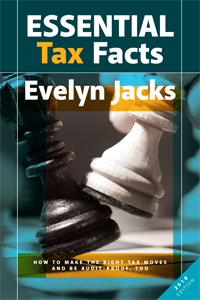Summertime Moves: 7 Tax-Efficient Tips

Summertime moves make sense for many families, as they can ensure the kids are well established to start in their new schools by fall. The moving process can be hectic, but it also creates lucrative tax deductions – so keep your receipts and documentation to take advantage. Here are seven moving-related tax tips for expense claims that every Canadian needs to know!
Moving Tax Tip #1 If the move is required by your employer and you sell your home at a loss, it is possible to receive a tax-free reimbursement of those losses, in amounts up to $15,000, should your employer choose to assist you. After this, one-half of the reimbursement over $15,000 is tax-free.
Moving Tax Tip #2 If you have to move and leave a vacant residence behind while you try to sell it, you may claim up to a maximum of $5,000 in moving expenses on your tax return for the costs incurred in the meantime. This include mortgage interest, property taxes, insurance and utilities.
Moving Tax Tip # 3 In order to qualify to claim moving expenses, you must move at least 40 kilometres closer to the location where you’ll earn income from employment or self-employment.
Moving Tax Tip #4 If you’re a student, you may be eligible to claim moving expenses if you’ll be attending a post-secondary program at a university, college or other educational institution full-time. But you must be earning income after the move to qualify.
Moving Tax Tip #5 If you have to stop working or operating a business where you currently reside, and have to establish a new home where you’ll live with your family, you may be eligible to claim moving expenses. Investment income and employment insurance benefits received after the move are not considered qualifying income for the purpose of claiming moving expenses.
Moving TaxTip # 6 When the scenarios above apply, the cost of selling the former residence—including real estate commissions, penalties for paying off a mortgage, legal fees and advertising costs—are deductible. So are the expenses relating to the purchase of the new home (as long as the old home was owned), including transfer taxes and legal fees, and temporary living expenses (meals and lodging) for up to 15 days.
Moving Tax Tip #7 If your move meets the criteria above, transportation expenses and costs of meals en route (100 percent, no 50 percent restriction) can be claimed, as well as removal and storage costs, including: insurance for household effects; costs of moving a boat, trailer, or mobile home (to the extent the costs of moving the mobile do not exceed the costs of moving the contents alone).
Excerpted from Essential Tax Facts: How to Make the Right Moves and Be Audit-Proof, Too. Pick up your copy today as your guide for tax-efficiency at all life stages.
Additional educational resources:
If you are a DIY tax filer for yourself or your family members, learn more about basic tax preparation to ensure that you take advantage of all deductions available and prepare accurate documentation. Take our Income Tax Filing Fundamentals certificate course (formerly Introduction to Personal Tax Preparation) online, and study at your convenience! Also, take advantage of the free Income Tax Estimator calculator, so you’re prepared for your 2018 tax requirements!
COPYRIGHT OWNED BY KNOWLEDGE BUREAU INC. 2018.
UNAUTHORIZED REPRODUCTION, IN WHOLE OR IN PART, IS PROHIBITED.
 |
 |
 |
 |
|
Refer a Friend |
Research |
Calculators |
Course Trials |
 |
 |
 |
 |